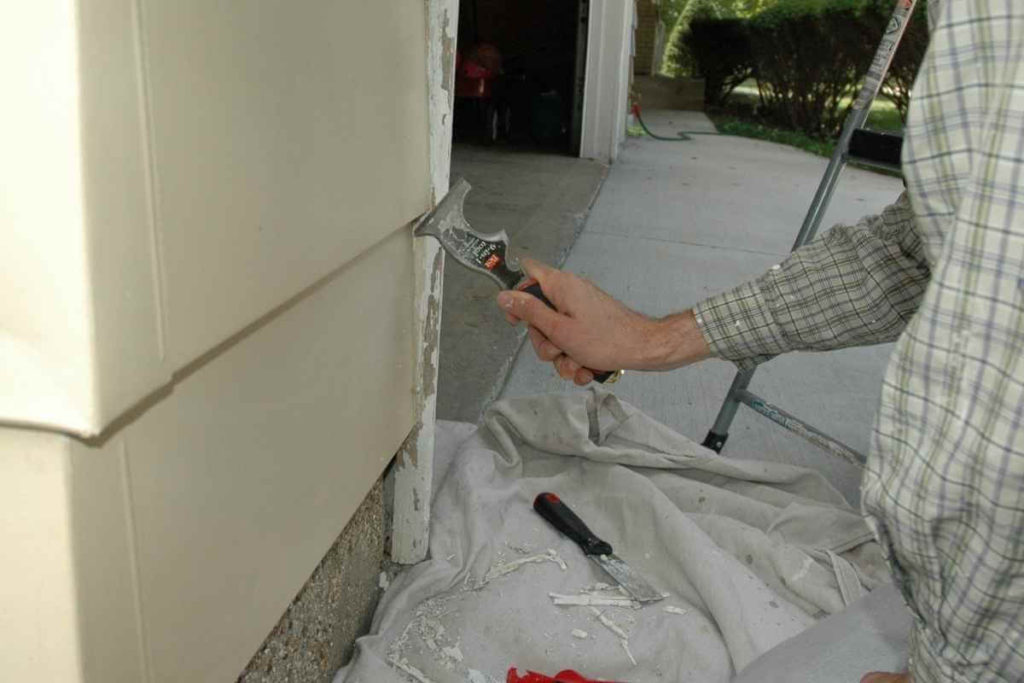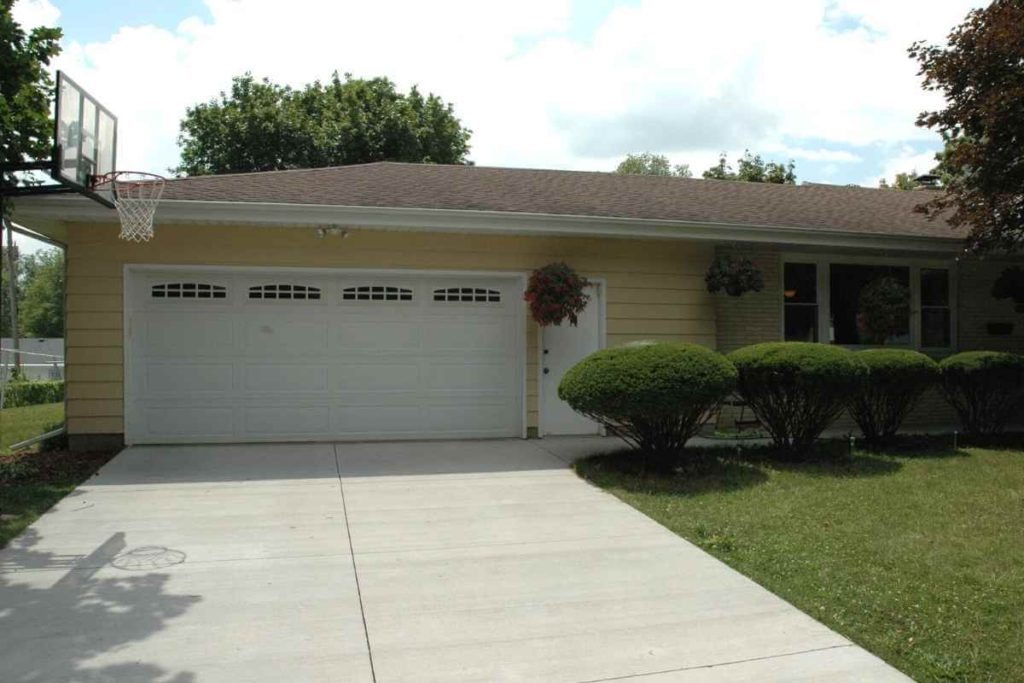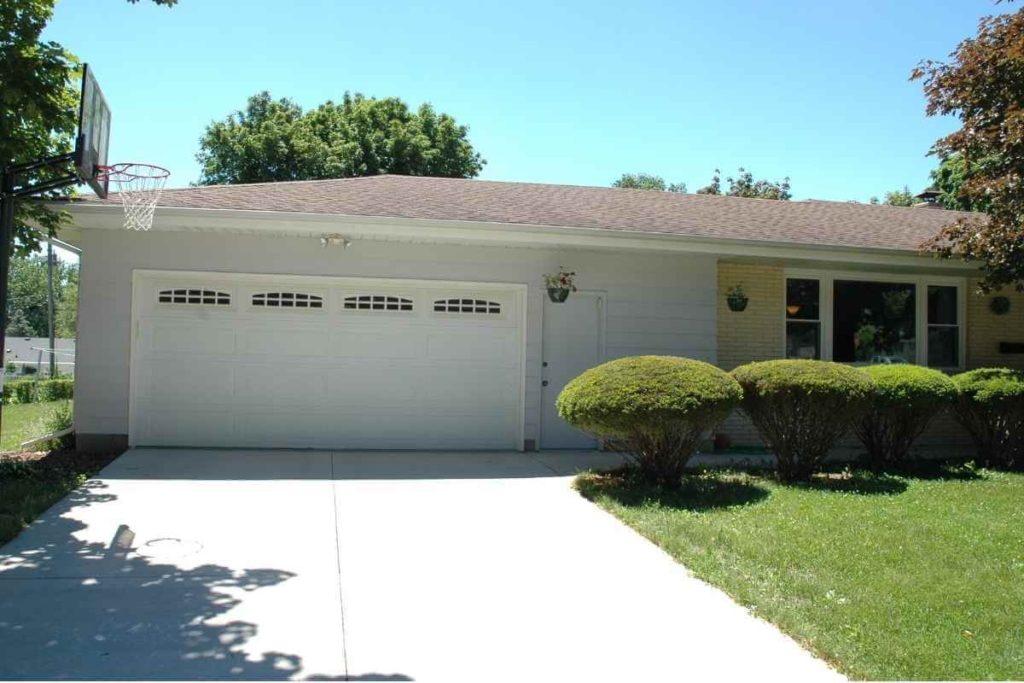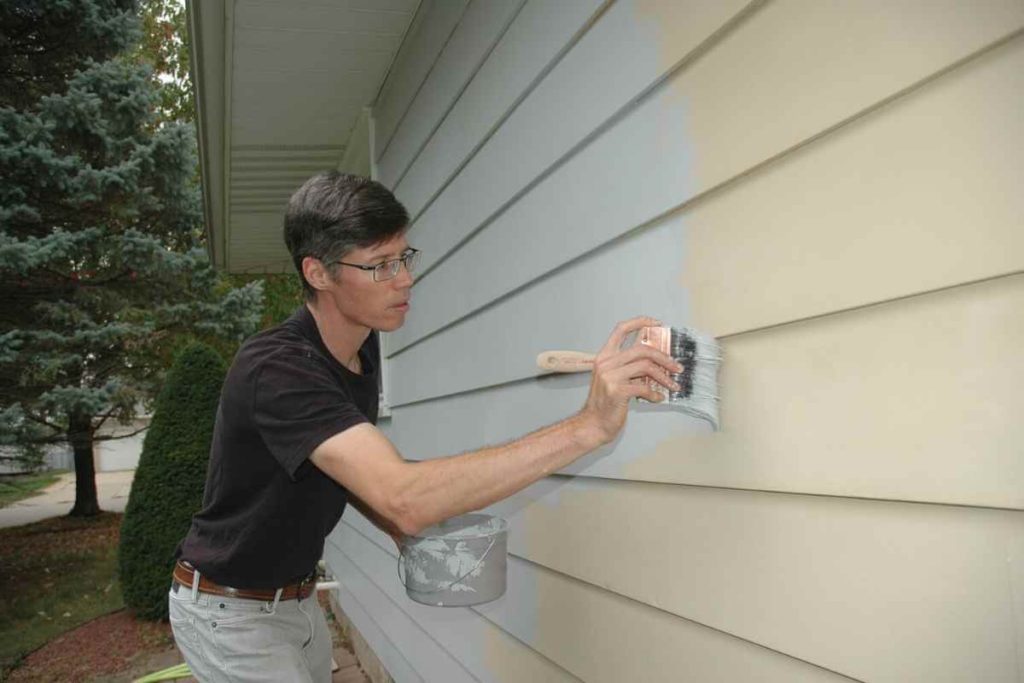This post was last updated on November 12th, 2022 at 01:16 pm
Last summer and fall I burned nearly 14,000 calories painting our house. If you’re asking who counts calories while painting a house, I’ll explain. I did it to make a point. A physical activity doesn’t have to be “formal” exercise. You can burn thousands of calories in ways that actually improve your home! And painting a home can be a great do-it-yourself project that keeps your body moving.
To be sure, you should research and plan before undertaking any home project. Painting the exterior of a home is relatively straightforward but does involve pitfalls. If your old paint job contains lead, you’ll want to take precautions beyond my level of expertise. I am not a professional painter but an enthusiastic DIYer.
I fully embraced this project because, for one, our house needed a fresh coat. The old color screamed 1999 and was faded. This project also easily passed my DIY test, meaning I wouldn’t blow up the house if I messed up. At worst, a flubbed paint job would be an eyesore, but the family would survive. Plus, I felt safe doing it. We have a ranch-style home, and I could reach every paintable part of the house with a step stool. No need for a ladder. It also helped that the old paint job was in good shape. There wasn’t much peeling paint, except on one side of the house.
Painting like a tortoise, not a hare
Because I approached this project with a goal of wanting to stay physically active, I made some decisions that increased the length of the project but also my amount of calories burned. A common preparation step is to clean siding with a high-pressure washer. But I opted to wash our aluminum siding by hand. And I also made sure to use both my dominant arm and hand (right) along with my weaker arm and hand (left) to balance the workload.
How I measured calories burned
Before starting, I created a log to keep track of three things while painting: date, the house side, duration of work, and calories burned. To calculate the calories burned, I wore a Fitbit for the first couple weeks. The device roughly estimates how calories burned based on multiple metrics, including heart rate. I used several days of data to figure out I burned an average of 213 calories per hour. At the end of the project, I multiplied that average by my total working hours (65 1/2) and came up with 13,941 calories burned. I think that’s a credible number if you consider a 155-pound person burns on average 232 calories per hour walking at 3 mph. In terms of intensity, painting our house felt a lot like walking.
One reason I enjoyed this project so much was that it took several weeks to complete. I could do an hour or so whenever I wanted. My goal wasn’t to finish quickly but to do a good job.
House painting stats
Here are some statistics from my log:
- Project start: Aug. 2, 2021
- Project end: Nov. 7, 2021
- Total amount painted: 1,146 sq. ft.
- Total number of days spent doing at least 30 minutes of work: 33
- Total time spent on project: 65 1/2 hours
- Time on prep work (including removal and reinstall of downspouts): 41 hours
- Time on painting: 24.5 hours
- Calories burned per hour (estimated average): 213
- Calories burned total (estimated): 13,941
Whew! On some days, I definitely felt tuckered out.
Read: Create a more active daily routine with ‘loops’

Like running 110 miles!
To put that 13,951 calories into context, that’s the equivalent of consuming nearly 25 McDonald’s Big Macs. In terms of calories burned, it’s the rough equivalent of running 110 miles at a rate of 8 minutes per mile.
Of course, one might argue that painting a house doesn’t provide the same cardio benefits as running. I’m happy to concede that point. But it’s not like painting a house left me in worse shape. If I had to categorize the activity, it’s more closely related to exercise than to sitting on the sofa. It was a workout, regardless of whether it was “ideal” from the standpoint of Spandex-sporting fitness gurus.
Unlike the kinds of workouts promoted by the gurus, painting a house provides a financial benefit. At the least, I enhanced the house’s curb appeal and maybe added several hundred dollars of value to it. As long as you don’t use a bizarre color like pink, painting a home’s exterior or interior offers a higher rate of return on investment than many remodeling projects. The fact that I did the work myself and didn’t hire anyone means I saved roughly $1,500 to $3,000. I spent about $200 on paint, brushes, and other supplies. (In case you’re wondering, I used Behr Marquee; flat; Silver Bullet.)
Tackling those unexpected problems
One of the nice parts about using DIY projects as form of physical activity is that it helps reduce the pressure to be efficient as possible. Setbacks mean more calories burned, which isn’t a bad thing if you’re trying to be less sedentary. With this project, I experienced relatively few frustrations. I did have to repaint part of one side of the house because I had missed peeling paint with the first coat. That mistake cost me about four hours, but I saw it as an opportunity to keep moving.
As with most projects I undertake, my biggest problem was unexpected. The downspouts came off easily enough. It was putting them back into place that proved tricky. I spent nearly 3 hours reinstalling downspouts, mostly monkeying with the screws and their misaligned holes. But with that being my worst headache, I can’t complain. At least one year out, the paint job is still holding up well.


Is house painting right for you? It depends
Whether painting your home’s exterior is for you depends on a multitude of factors. Your physical abilities, environmental hazards, your budget, and your time availability are among the important considerations. One of the best ways to enjoy a project like this is to expect that you’re going to encounter setbacks. One trick I use to avoid disappointment is to calculate how much time I think I’m going to need for a project and then double that amount. Really, the only expectation I had for this project was to finish before freezing temperatures arrived, and I barely made the cutoff.
Good luck in your next DIY project. Just remember, it’s not just about improving your home. You can use these projects to create an active lifestyle. A physical activity doesn’t have to be exercise. You can use movement to get real stuff done!

